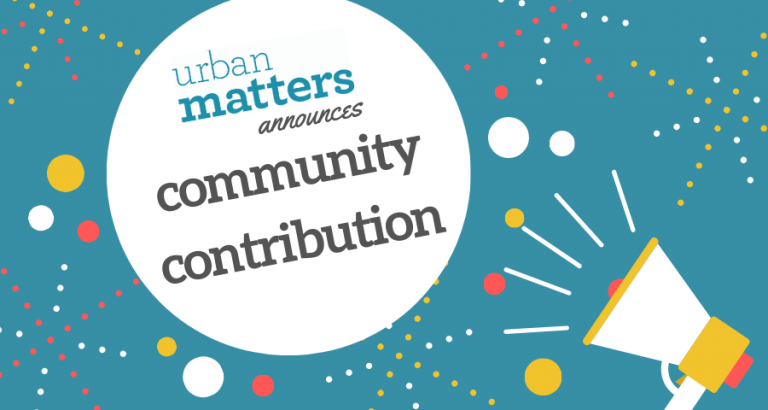25 September 2016
Waking the Sleeping Giant
3 Steps on Your Journey Toward Creating Impact Through Social Interprise
Business and society have often been at odds, and today there’s a change in the air. A new model is emerging—a way to achieve economic success while helping address some of society’s largest problems. Under the shared value model, companies are taking societal needs into consideration as they craft their broader strategies.
And promoting a healthy community is good business. It involves a longer-term view on what’s good for business. Look at ‘rustbelt’ cities in the US, or rotted out mining/industry towns in British Columbia. Was the short-term, focus on near-term profit good for business in the end? Today many are ghost towns. No one is buying anything, communities are dead and businesses are gone.
Considering the bigger picture is the center of sophisticated thought leading companies’ strategies. Want to join the party? Forming a social enterprise starts with some small but exciting steps.
Step One: Get to Yes
Shared value is a new concept for some in the more traditional corporate world, so your first step is getting buy in. Although many companies are becoming more innovative, there’s also still that old fashioned prevailing sense that “social community stuff is government stuff. That’s NGO stuff. That’s for non-profits. That’s not something we need to be concerned with. That’s why we pay taxes. That’s why we donate.”
Maybe that was a reasonable expectation in the 1950s. But today the scale of our problems is far too significant for the government to deal with alone. Issues outmatch the capacity of any sector. Our taxes have worked up to a point, but problems that are left simply aren’t getting dealt with. And so companies are being invited to the table in a different way. It’s an exciting time to be in business—today there are opportunities to do good, create access to markets and increase goodwill—all while reinforcing your business and brand. Today you get to choose how to operate under the banner of capitalism.
How Urban Systems did it…Urban Systems is a privately-held company (ie. not publicly traded), which made this step a little more straightforward for us as we know who we’re dealing with: ourselves. We were able to present a case to our team that highlighted the huge benefits of operating in this direction and were lucky to have a group of people who wanted to see change, positive growth, and were willing to experiment. We sought out mentors such as Al Etmanski, David Lepage and Paul Lacerte, we went to workshops, we attended events and spoke at conferences, we read, we planned, and we went for it.
Step Two: Unearth the Diamonds. Connect Them to Your Business Outcomes
It may not be obvious how to contribute at first, but here’s where it gets interesting. Your company has unique assets and core capabilities—things you may be so used too that you take them for granted. The idea here is to leverage what you excel at, and connect it to your business model. An exploration process—possibly with the help of a facilitator or mentor—is in order. Some helpful questions to ask: What are some descriptors of your organizational culture or attributes? Do you have incredible sales people? Folks who are amazing at engaging with others? Outstanding logistics capabilities?
Then, consider how these unique attributes, assets and skills relate to the social and community issues that persist in communities that you uniquely care about as a business? Where is the intersection point between the two and how can you reinforce your business model with it?
Dove Soap’s Campaign for Real Beauty is a perfect example. Here’s a company that looked at what they do best (speak to women), saw a problem (body hatred—approximately 80 percent of American women are reportedly unsatisfied with their bodies, and 81 percent of 10-year-old girls are afraid of becoming fat) and saw where they could creatively jump in to do good business while addressing a deep issue in society and tying it back to their brand. Their mission: “To make women feel comfortable in the skin they are in, to create a world where beauty is a source of confidence and not anxiety.” Tremendous free and earned media resulted, as did fabulous brand recognition and loyalty.

How Urban Systems did it… At Urban, as we pulled back the curtain, we realized we have a rich source of creative problem solvers that care deeply about all of our communities across Canada. They live, work and play in those communities, they raise their children and families in those communities. A network of highly creative and dedicated problem solvers became the starting point for our social enterprise venture, Urban Matters CCC. We realized our best move was to capitalize on the energy, passion and commitment of our people. We are good at looking at problems from new angles, at leading and at brining people together to work on issues. We also leveraged our modern offices spaces as a home to incubate related social ventures. People, drive, energy and cool space were our core assets.
Step Three: Then, and Only Then, Invite Others to the Table
Too often, companies want to do some good work in the world, and they look outward instead of inward. They may choose a convenient cause to support (so-and-so’s wife or husband is on the board, the charity is near the office, etc.) and fall in line behind a non-profit society, acting in good faith, yet not working on an issue that relates to their business and not leading the charge. Once you’ve determined your core assets and the areas that you’d like to use them, the next step is to start inviting people and organizations and sectors to YOUR table. You aren’t going to do this alone. Build partnerships and alliances, but you’ve got to go to that table knowing what you want to do. The people you connect with should be thoughtfully chosen based on where you think what you are working on will reinforce your business model. That’s the beautiful self-propelling piece. Be proactive and lead the charge—it will reinforce your bottom line and add vigor and passion to your work and your team’s buy in.
How Urban Systems did it…At Urban, we decided that the best way to achieve a sustained social and community impact related to our core assets was not to create another non-profit society, but rather do what we’ve been doing well for decades and play to our strengths; help other organizations and individuals achieve more profound and sustained success on their journey. So once we created the vehicle (Urban Matters CCC) we then set out to develop the new partnerships necessary to make a difference in areas that we’re well suited to participate in. Community issues like housing and homelessness, food and water security, livelihoods and economic development, governance and capacity building, all for communities of people (and the organizations that support them) that aren’t readily participating in what we’d call the market economy; like people of Indigenous ancestry or new Canadians. It’s an on-going journey and we’re finding new partners, and deeper sustainable impact, everyday.
These three steps are a great way to start moving toward the goal of creating a social enterprise arm to your for profit business. You don’t have to do it alone, and as you begin your journey, should you want some advice or a chat, we would welcome your phone call. Let’s do more of this wonderful work together.
Categories:
Social Enterprise




